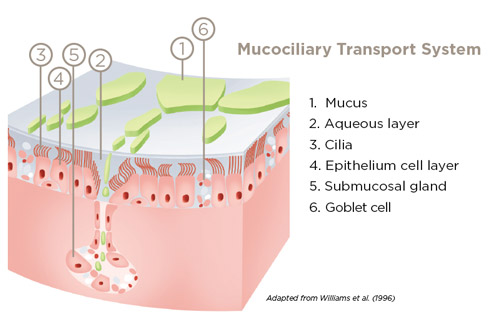Mucociliary Health
Humidity Maintains Efficient Gas Exchange and Preserves Airway Defense
As air travels down the airway, heat and moisture is drawn from the airway mucosa to the point where the gas reaches 37 °C, 44 mg/L at the carina. The majority of this conditioning is carried out in the nasopharynx. It is important for the airway mucosa to retain a balance of heat and moisture to maintain a fully functioning mucociliary transport system and an efficient line of defense. This in turn plays an important role in efficient gas exchange by maintaining clear and open airways with effective mucus clearance.

A Healthy Mucociliary Transport System
The mucociliary transport system is comprised of three layers: mucus, the aqueous layer and ciliated epithelium. These layers all contribute heat and moisture to ensure a finely tuned mucociliary transport system. Millions of cilia lining the airway (around 200 individual cilia per cell) beat in the aqueous layer at up to 15 times per second. The beating cilia clear mucus and contaminants out of the airways. The clearance speed relies on the cilia beat frequency and quality of the mucus. Both are dependent on the body’s ability to replenish moisture to all three layers.